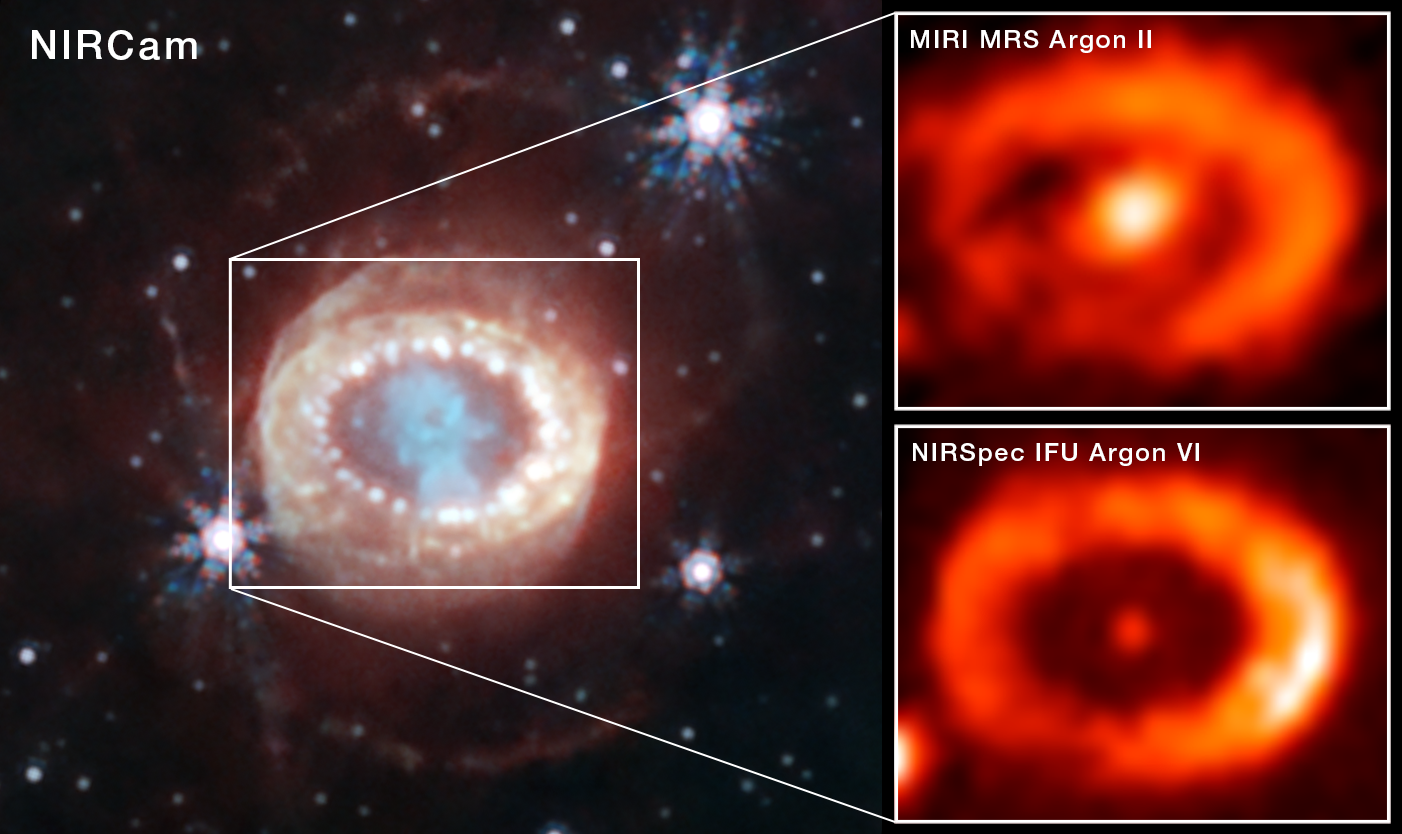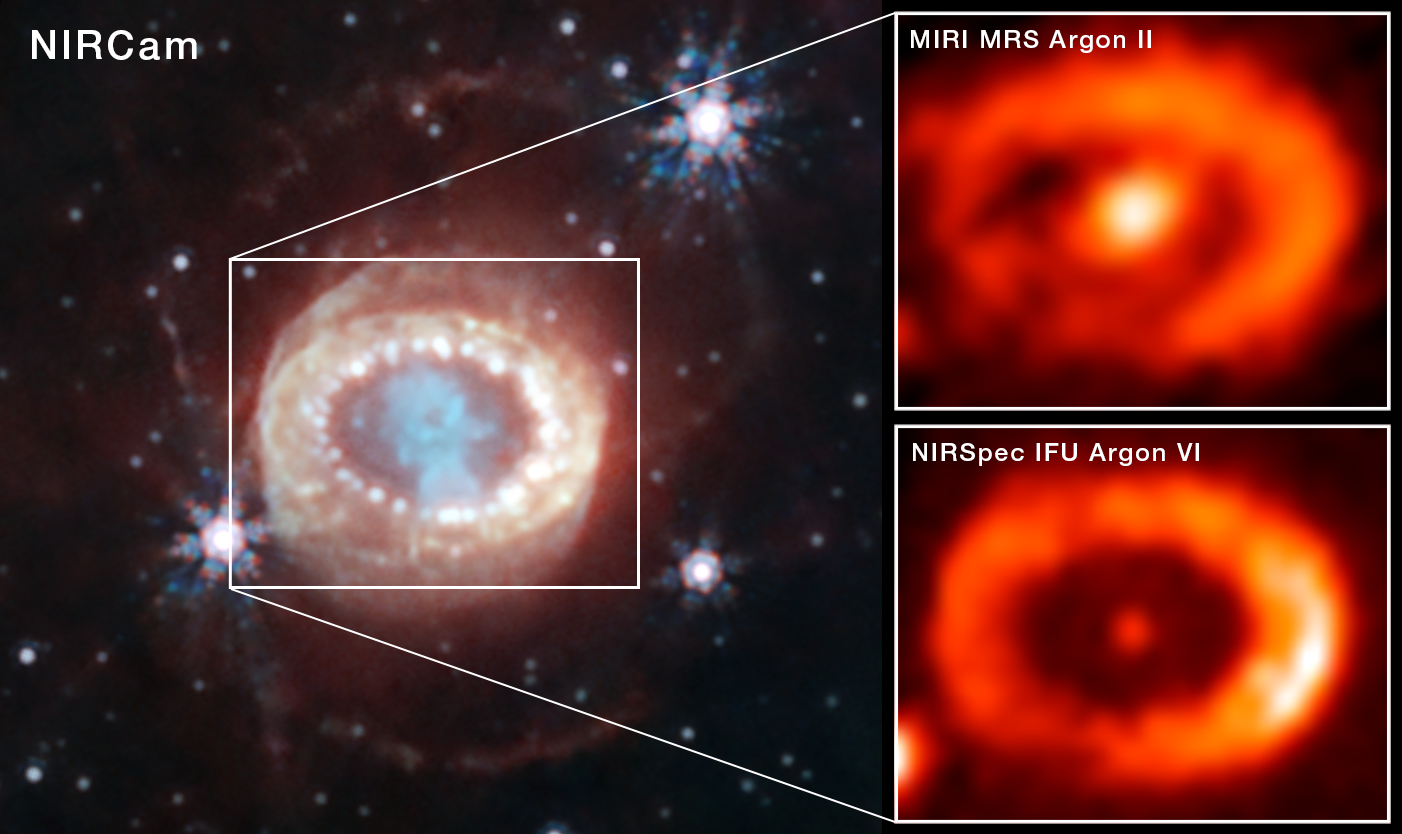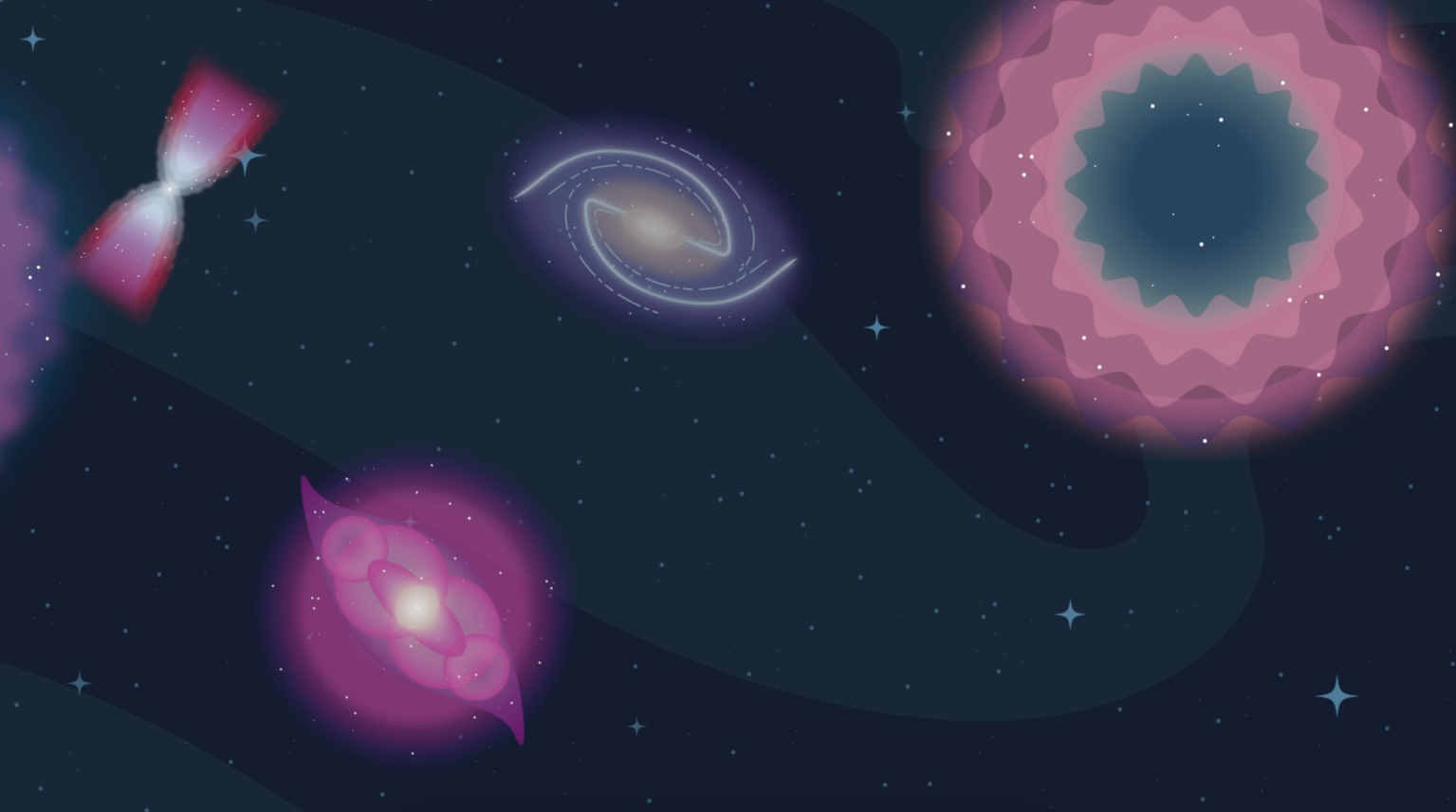Webb Finds Evidence for Neutron Star at Heart of Young Supernova Remnant
NASA’s James Webb Space Telescope has found the best evidence yet for emission from a neutron star at the site of a recently observed supernova. The supernova, known as SN 1987A, was a core-collapse supernova, meaning the compacted remains at its core formed either a neutron star or a black hole. Evidence for such a […]

Webb Finds Evidence for Neutron Star at Heart of Young Supernova Remnant

NASA, ESA, CSA, STScI, C. Fransson (Stockholm University), M. Matsuura (Cardiff University), M. J. Barlow (University College London), P. J. Kavanagh (Maynooth University), J. Larsson (KTH Royal Institute of Technology)
NASA’s James Webb Space Telescope has found the best evidence yet for emission from a neutron star at the site of a recently observed supernova. The supernova, known as SN 1987A, was a core-collapse supernova, meaning the compacted remains at its core formed either a neutron star or a black hole. Evidence for such a compact object has long been sought, and while indirect evidence for the presence of a neutron star has previously been found, this is the first time that the effects of high-energy emission from the probable young neutron star have been detected.
Supernovae – the explosive final death throes of some massive stars – blast out within hours, and the brightness of the explosion peaks within a few months. The remains of the exploding star will continue to evolve at a rapid rate over the following decades, offering a rare opportunity for astronomers to study a key astronomical process in real time.
Supernova 1987A
The supernova SN 1987A occurred 160,000 light-years from Earth in the Large Magellanic Cloud. It was first observed on Earth in February 1987, and its brightness peaked in May of that year. It was the first supernova that could be seen with the naked eye since Kepler’s Supernova was observed in 1604.
About two hours prior to the first visible-light observation of SN 1987A, three observatories around the world detected a burst of neutrinos lasting only a few seconds. The two different types of observations were linked to the same supernova event, and provided important evidence to inform the theory of how core-collapse supernovae take place. This theory included the expectation that this type of supernova would form a neutron star or a black hole. Astronomers have searched for evidence for one or the other of these compact objects at the center of the expanding remnant material ever since.
Indirect evidence for the presence of a neutron star at the center of the remnant has been found in the past few years, and observations of much older supernova remnants –such as the Crab Nebula – confirm that neutron stars are found in many supernova remnants. However, no direct evidence of a neutron star in the aftermath of SN 1987A (or any other such recent supernova explosion) had been observed, until now.
Image: Supernova 1987A

Claes Fransson of Stockholm University, and the lead author on this study, explained: “From theoretical models of SN 1987A, the 10-second burst of neutrinos observed just before the supernova implied that a neutron star or black hole was formed in the explosion. But we have not observed any compelling signature of such a newborn object from any supernova explosion. With this observatory, we have now found direct evidence for emission triggered by the newborn compact object, most likely a neutron star.”
Webb’s Observations of SN 1987A
Webb began science observations in July 2022, and the Webb observations behind this work were taken on July 16, making the SN 1987A remnant one of the first objects observed by Webb. The team used the Medium Resolution Spectrograph (MRS) mode of Webb’s MIRI (Mid-Infrared Instrument), which members of the same team helped to develop. The MRS is a type of instrument known as an Integral Field Unit (IFU).
IFUs are able to image an object and take a spectrum of it at the same time. An IFU forms a spectrum at each pixel, allowing observers to see spectroscopic differences across the object. Analysis of the Doppler shift of each spectrum also permits the evaluation of the velocity at each position.
Spectral analysis of the results showed a strong signal due to ionized argon from the center of the ejected material that surrounds the original site of SN 1987A. Subsequent observations using Webb’s NIRSpec (Near-Infrared Spectrograph) IFU at shorter wavelengths found even more heavily ionized chemical elements, particularly five times ionized argon (meaning argon atoms that have lost five of their 18 electrons). Such ions require highly energetic photons to form, and those photons have to come from somewhere.
“To create these ions that we observed in the ejecta, it was clear that there had to be a source of high-energy radiation in the center of the SN 1987A remnant,” Fransson said. “In the paper we discuss different possibilities, finding that only a few scenarios are likely, and all of these involve a newly born neutron star.”
More observations are planned this year, with Webb and ground-based telescopes. The research team hopes ongoing study will provide more clarity about exactly what is happening in the heart of the SN 1987A remnant. These observations will hopefully stimulate the development of more detailed models, ultimately enabling astronomers to better understand not just SN 1987A, but all core-collapse supernovae.
These findings were published in the journal Science.
The James Webb Space Telescope is the world’s premier space science observatory. Webb is solving mysteries in our solar system, looking beyond to distant worlds around other stars, and probing the mysterious structures and origins of our universe and our place in it. Webb is an international program led by NASA with its partners, ESA (European Space Agency) and the Canadian Space Agency.
Downloads
Right click the images in this article to open a larger version in a new tab/window.
Download full resolution images for this article from the Space Telescope Science Institute.
Media Contacts
Rob Gutro – rob.gutro@nasa.gov
NASA’s Goddard Space Flight Center, Greenbelt, Md.
Christine Pulliam – cpulliam@stsci.edu
Space Telescope Science Institute, Baltimore, Md.
Related Information
More Webb News – https://science.nasa.gov/mission/webb/latestnews/
More Webb Images – https://science.nasa.gov/mission/webb/multimedia/images/
Webb Mission Page – https://science.nasa.gov/mission/webb/
Related For Kids
En Español
Share
Details
Related Terms
What's Your Reaction?











































